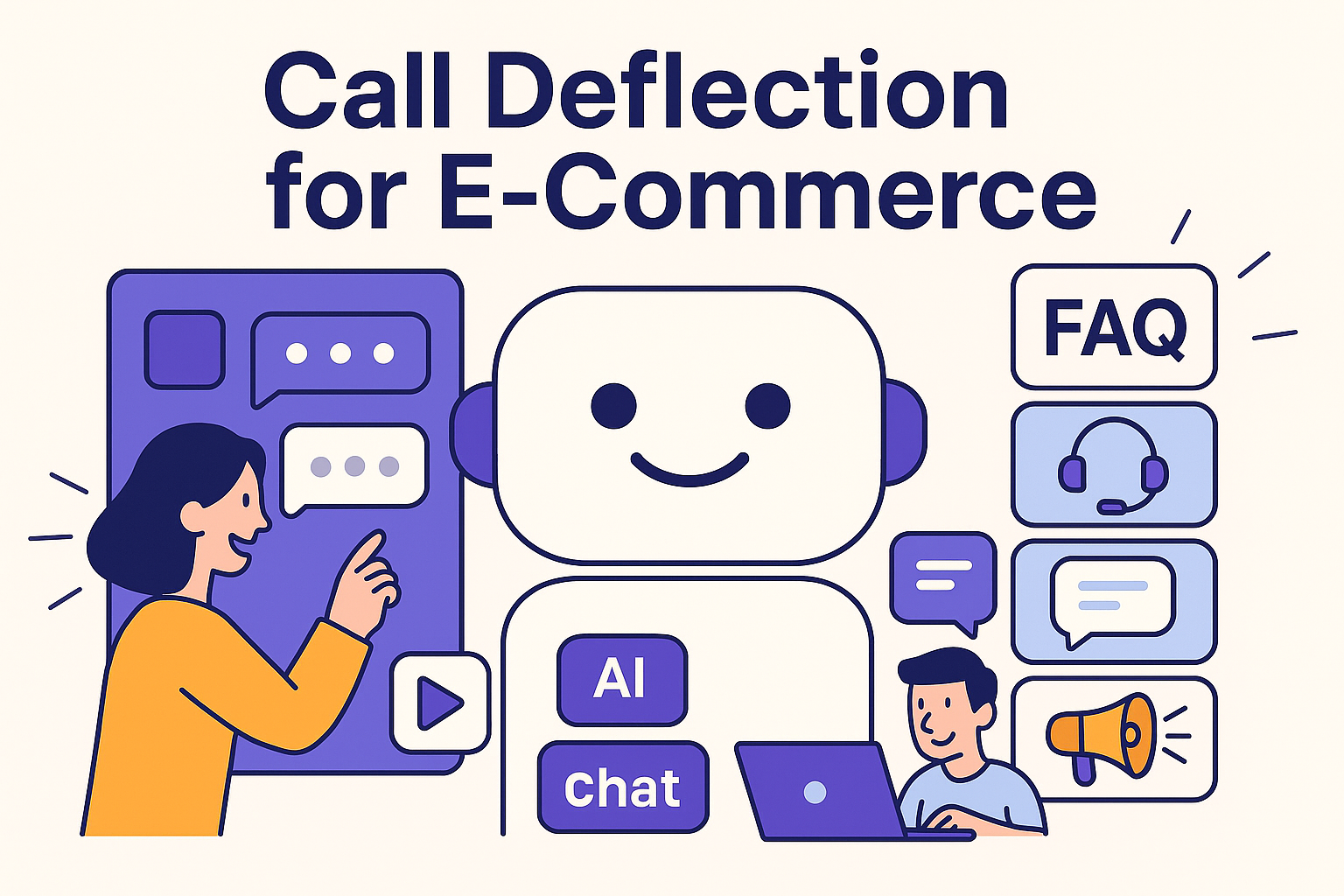Top 8 E-commerce Trends in 2025
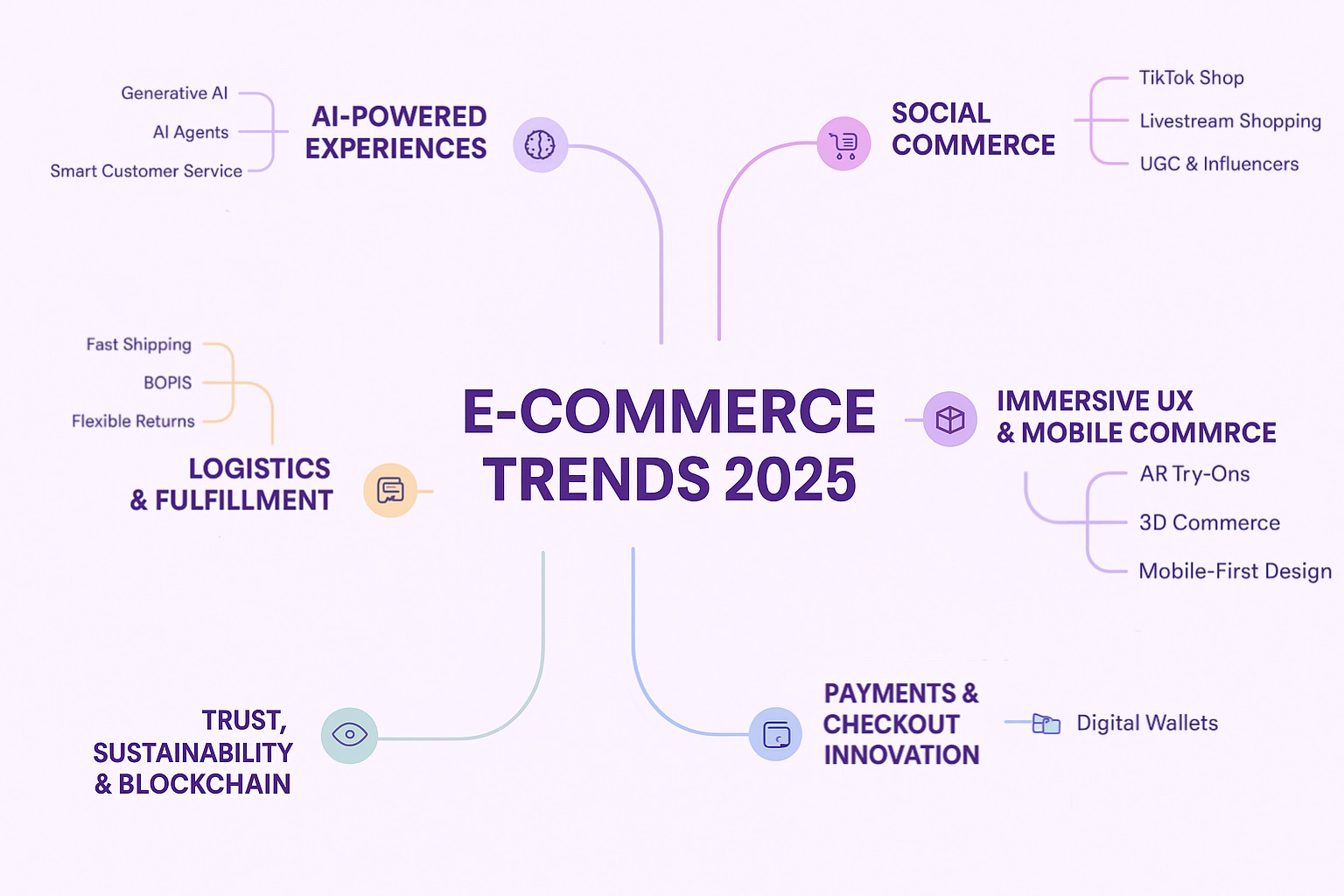
With how fast the global e-commerce landscape is evolving, you might wonder what's next. Well, I did too, and here is what I found out.
With digital commerce expected to surpass $5 trillion globally, consumer expectations are climbing, technologies are maturing, and the competitive landscape is tightening. New trends and software are emerging from everywhere, and 2025 is the year when you either leverage these technologies for growth or you will fall behind.
So, what trends will define the next wave of e-commerce growth? Let’s dive in.
1. AI-powered Experiences
Artificial Intelligence is at the core of nearly every innovation happening in e-commerce right now. It is driving end-to-end change across the shopping journey, including smarter content creation, faster order fulfillment, and hyper-personalized customer interactions.
Rise of Generative AI
With the rise of generative AI and large language models, e-commerce platforms are now building intelligent product pages, automating product descriptions, and creating dynamic visuals tailored to individual preferences. These tools reduce friction for online shoppers while helping retailers scale faster and more cost-effectively.
Read more: Top 8 usecases of AI in e-commerce
Brands are also investing in AI integration within customer service, using smart chatbots and assistants to provide 24/7 support, automate returns, and even recommend upsells based on browsing and purchase history.
AI Agents
The shift toward agentic commerce is one of the most exciting developments in 2025. Big companies like Walmart are using smart assistants (Sparky) powered by machine learning to act on behalf of customers.
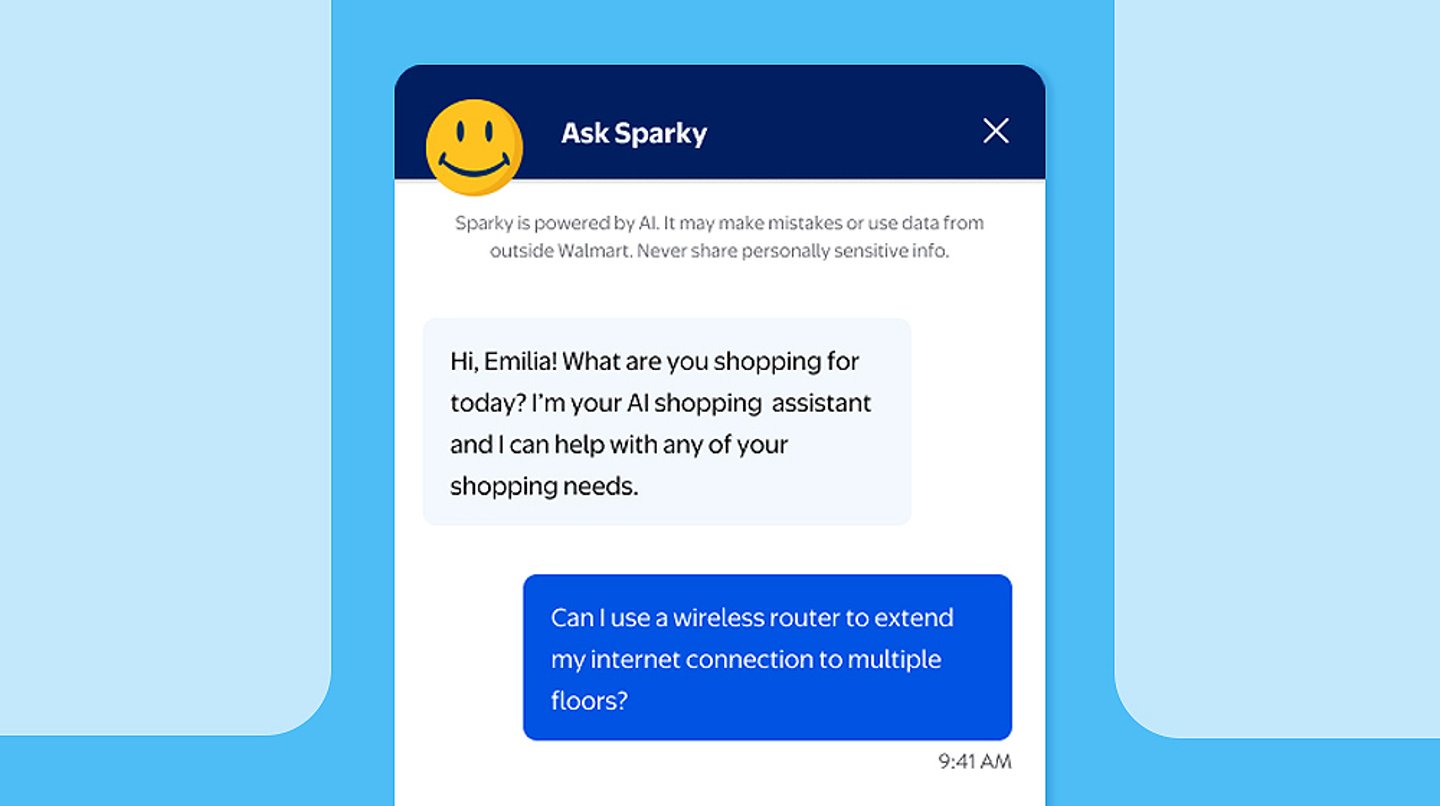
Behind the scenes, AI integration is also optimizing inventory, pricing, and supply chain efficiency using real-time Customer Insights.
Case study: How Footshop achieved 54% automation level and 33% cost reduction using an AI chatbot.
2. Social Media Commerce
In 2025, social commerce is a fundamental sales channel. Platforms like TikTok Shop, Instagram, and YouTube are turning social media into virtual storefronts, where every swipe, scroll, and share can lead directly to checkout.
Based on a Forbes study, 78% of people turn to social media for discovery and research of new products and brands.
This shift is transforming B2C e-commerce, bringing retail closer to the spaces where people already spend their time online. For modern online shoppers, especially Gen Z and Millennials, social shopping is intuitive, fun, and increasingly preferred over traditional online store browsing.
Content to checkout
Brands no longer rely only on ads to drive sales. User-generated content (UGC), influencer campaigns, and short-form videos are the new way to drive impulse purchases in real-time.
On platforms like TikTok Shop, creators demo products through viral trends and authentic storytelling, enhancing customer experience by offering real-world proof and emotion-driven marketing. One-click purchases, integrated digital wallets, and buy online, pickup in-store options are making the gap between interest and action almost invisible.
TikTok Shop is projected to exceed $20 billion in gross merchandise volume (GMV) by the end of the year.
Livestream shopping
Meanwhile, livestream shopping is booming in Asia and finding its way to the West. Through live streaming, influencers and brand reps showcase products in real time, answer questions, and offer limited-time deals that create urgency and engagement.

Companies that have adopted live commerce have reported conversion rates of around 30%.
And this is just the beginning. Social commerce is expected to represent nearly 20% of global e-commerce sales by 2026, a massive opportunity for brands that adapt early.
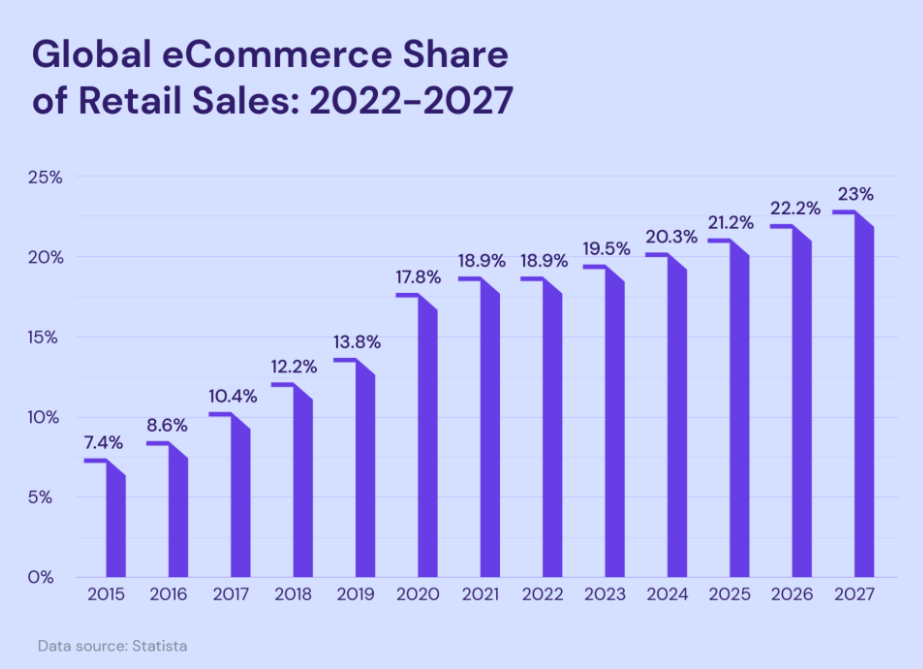
3. Advanced UX: AR, VR, Mobile & Immersive Design
In 2025, customer experience is all about being engaging and intuitive. As competition heats up, retailers are investing heavily in augmented and virtual reality, 3D commerce, and mobile commerce to give online shoppers more immersive ways to explore products.
Try-ons and 3D shopping
Static catalogues are now behind us. Now, AR try-ons let customers visualize how furniture will fit in their living room, see how a pair of glasses looks on their face, or try on clothes virtually. These interactive previews don’t just entertain; they reduce returns by helping shoppers make confident purchase decisions.
Case study: Nike's virtual fitting room is the ability to virtually "scan" the customer's feet, ensuring that shoes fit perfectly. The app then provides the most accurate recommendations based on size, shape, and individual preferences.
Similarly, 3D commerce allows shoppers to rotate, zoom, and interact with products in real time.

Mobile-first design
Have you ever visited a website on your phone and it was designed so badly that you immediately gave up on what you were looking for? Probably. That is why, with mobile commerce expected to dominate global e-commerce sales, brands are rethinking their interfaces for smaller screens. Features like thumb-friendly navigation, micro-animations, and one-swipe checkouts are becoming standard.
At least 79% of smartphone users have made a purchase online using their mobile device in the last 6 months
4. Payments and Checkout Innovations
Frustrations in the checkout process usually end up in cart abandonment and lost revenue. So, businesses are trying to make it as easy as possible for you to pay.
One-click chechouts
The adoption of digital wallets, like Apple Pay, Google Pay, and PayPal, is accelerating, especially among mobile-first online shoppers. Combined with one-click checkout experiences, these solutions make purchasing nearly instantaneous, cutting down the time from decision to transaction.
The digital wallet market size is expected to grow to $119 billion in 2029 at a compound annual growth rate (CAGR) of 20%.
Payment models
There has been a rise in different payment methods, including BNPL (buy now, pay later), BOPIS (buy online, pay in store) or interest-free installments. And now subscription models and subscription boxes are becoming mainstream (everything is a subscription now...). For consumers, they offer convenience and predictability; for brands, they deliver steady revenue streams and stronger customer retention.

5. Trust, Privacy & Sustainability
Trust is the most valuable currency in global commerce. As online shoppers become more conscious of data privacy, security, and sustainability, brands must go beyond just good products; they need to prove they are responsible.
Based on a study by Baymard Institute, 18% of online shoppers abandoned their carts due to concerns about website security.
Blockchain
Blockchain technology is stepping into the spotlight as a tool for both security and supply chain transparency. Blockchain is like a digital notebook that everyone can see, but no one can secretly change. Every time something happens, like a product being made, shipped, or sold, it gets recorded as a “block” in the notebook. Once written, it stays there forever, so it’s nearly impossible to fake.
Retailers using blockchain can also verify customer reviews, helping shoppers make informed decisions without the fear of fake ratings influencing their purchase.
Sustainability
Shoppers are increasingly choosing brands that align with their values. Sustainable practices, such as carbon offsetting, carbon-neutral shipping, and eco-friendly packaging, are trust signals. Some brands are going further with sustainability certifications and detailed environmental impact reports integrated into product pages.
By linking transparent supply chain data with blockchain verification, retailers can prove that their sustainable products are genuinely ethical and responsibly sourced.
Case study: Patagonia has made sustainability a part of who they are. With initiatives like the "Worn Wear" or "don't buy this jacket" on Black Friday.

6. Logistics, Delivery & Return Expectations
When I order something online, I want free, fast, and reliable delivery, and I want free returns and cancellations. And I am not the only one.
Free shipping
Ninety percent of consumers are likely to abandon shopping carts that feature high shipping costs for standard items. The pressure is on retailers to invest in order fulfillment while balancing cost, sustainability, and the overall customer experience.
Based on a McKinsey study, the most important factor in delievery has changed from speed to cost from 2022 to 2024.
Flexibility
Modern delivery and returns policies can make or break customer loyalty. Options like buy online, pickup in-store (BOPIS) and local drop-off return points are becoming widespread, offering greater flexibility for busy consumers. Retailers that handle returns quickly and without hassle see significantly higher repeat purchase rates.
Over 60% of customers look at the return policy even before they make a purchase.
7. Conversational commerce
We have all heard "Hey Siri," or "Hey Alexa" a few times. Now they have become a part of the shopping experience with a CAGR of 14.8%, reaching $32.6 billion by 2035.
Voice commerce
Whether through smart speakers like Amazon Alexa, voice assistants on smartphones like Siri, or integrated voice features in e-commerce apps, shoppers can now search, compare, and even buy products using natural, spoken language.
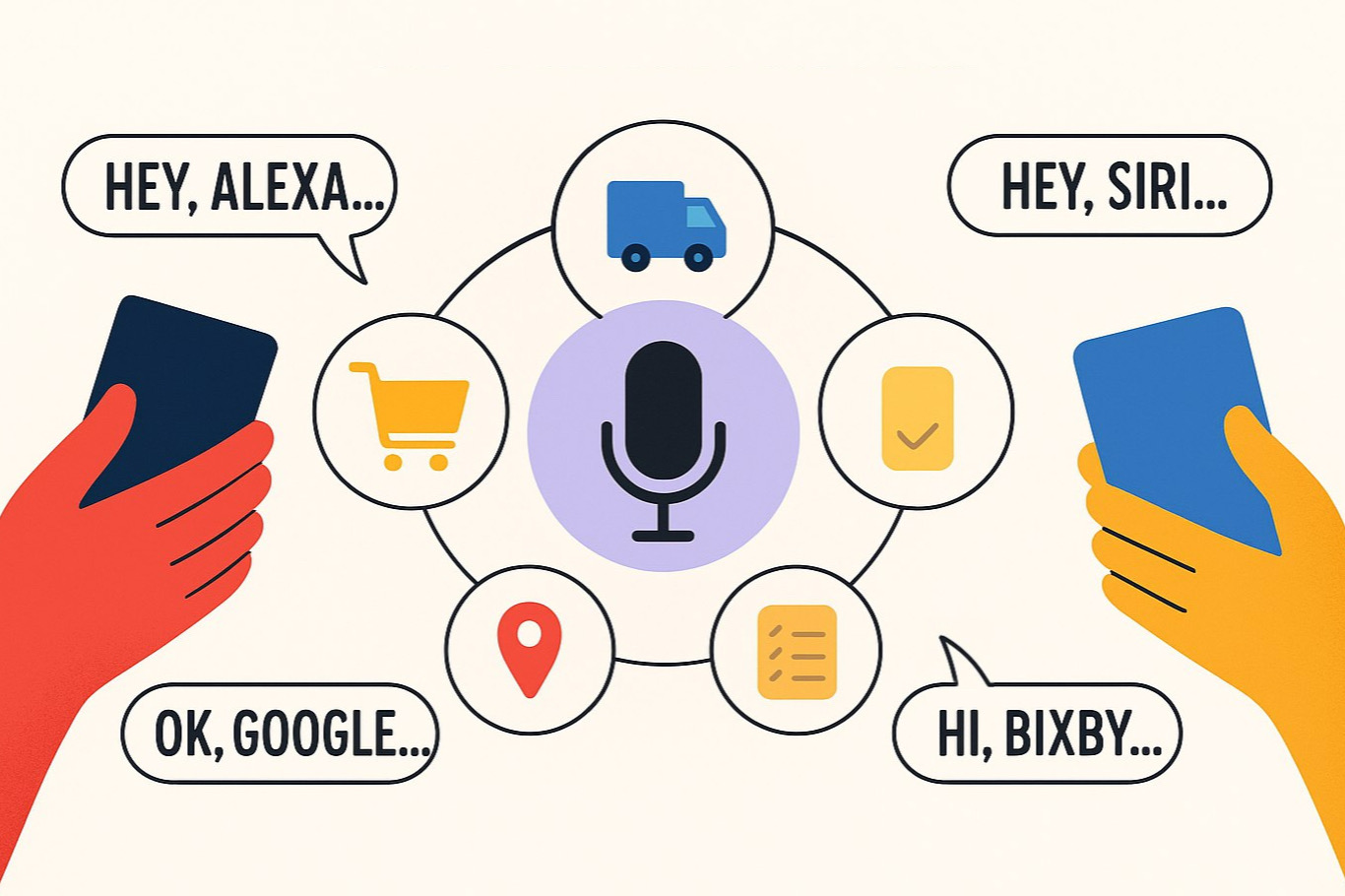
Ambient commerce
This is the newest step, referring to the use of AI to make product discovery happen without the shopper actively searching. For example, a smart fridge suggesting grocery restocks, or a wearable device recommending running shoes after tracking your fitness activity.
8. Marketplaces & B2B Expansions
In many cases, you can't sell more and more to the same customers; You have to expand into new sales channels or new customer segments.
Marketplaces like Amazon, Alibaba, and niche platforms give brands instant access to huge audiences, while shoppers get convenience and trust. But competition is tough. Standing out often means investing in retail media (ads and sponsored listings inside the marketplace) to get noticed.
On the B2B side, platforms like Shopify are making cross-border commerce easier than ever, helping brands tap into international demand without the complexity of managing multiple regional sites.
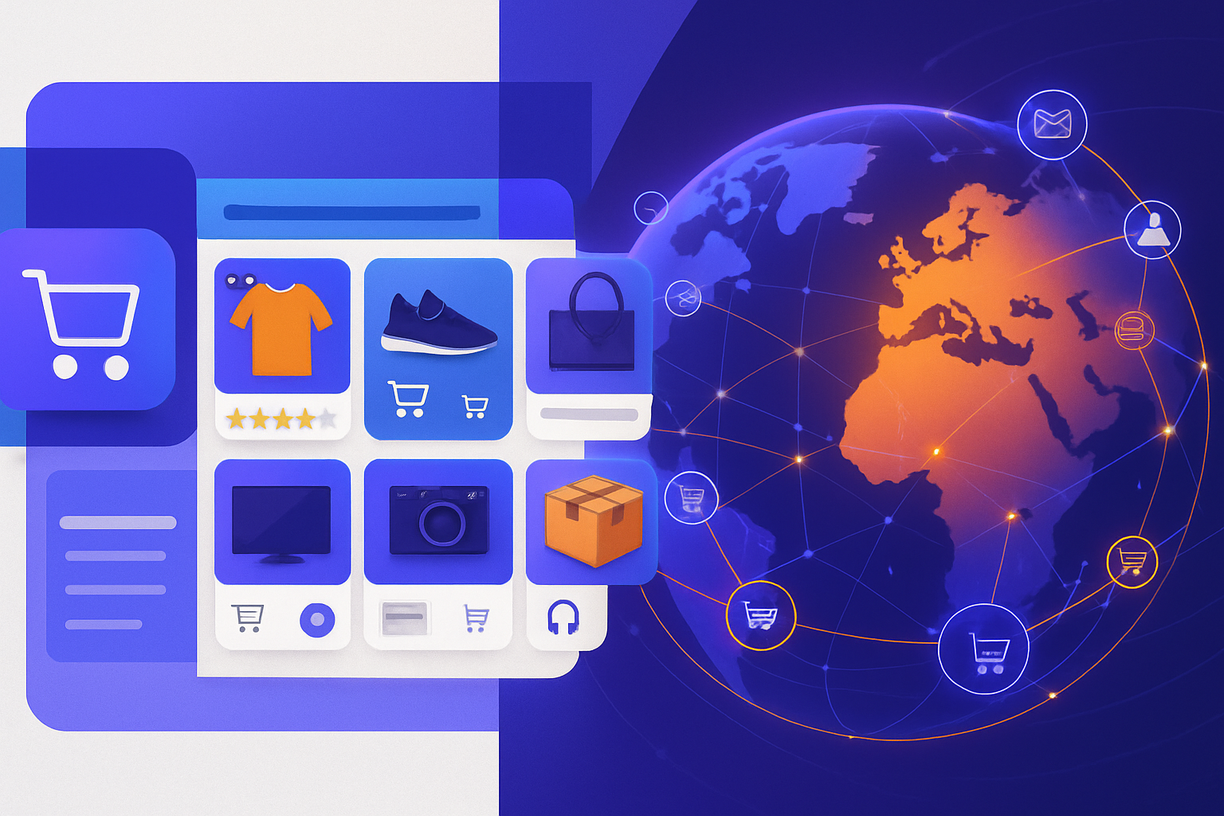
So, we can confidently say e-commerce in 2025 is faster, smarter, and more connected than ever (duh!). From AI-driven personalization and voice-enabled shopping to social commerce and sustainable logistics, the landscape is evolving at a pace that demands adaptation.
Brands that thrive will be the ones that embrace innovation while keeping the customer experience at the center. This means not just chasing every new technology, but strategically adopting tools and strategies that align with their audience, values, and long-term goals.
The takeaway? E-commerce isn’t slowing down; it’s expanding into new channels, technologies, and experiences. The question for businesses is no longer if they should adapt, but how fast they can do it.
Bonus: This article was brought to you by Amio, a messaging automation platform that helps e-commerce brands connect with customer service by using generative AI to automate your customer interactions. And we are always ready to help your shop.
Book a 30-minute session where we will find out how AI bot can help you decrease call center costs, increase online conversion, and improve customer experience.
Book a demo

